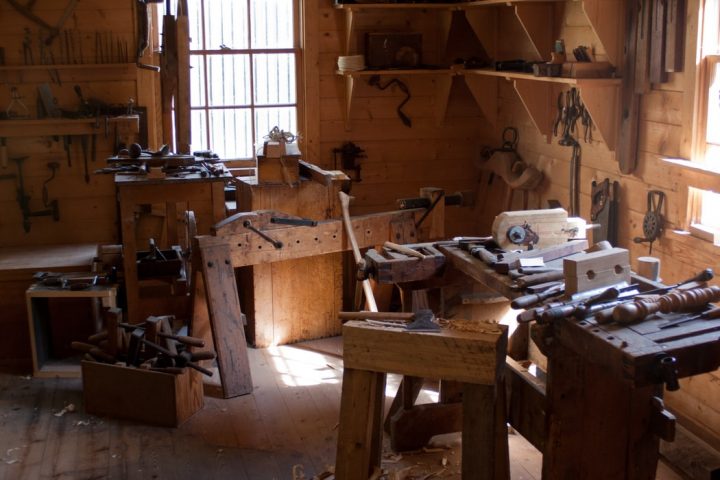Deciding What Scrap Wood to Keep? Here’s How
Passionate woodworkers are usually faced with the situation where they have stacks of scrap wood that they find of no use. Hoarding these leftover pieces of wood does not help unless utilized in a creative way. Usually, these scraps of wood are stored in the hopes of finding a proper use in the future. However, most woodworkers eventually do not find any way to successfully utilize those, as they are basically uneven or damaged planks that do not come in use to the crafters. Read this article to understand the types of scrap wood to keep and various ways to implement those in creative projects.

Problems of Hoarding Scrap Wood
A woodworker’s workshop can be greatly stockpiled with scrap wood that has no planned use. The sight of a room filled with “garbage” can be overwhelming for most people, including professional woodworkers themselves. Important tools can be hard to find among all the mess, which could be a matter of concern during times of emergency to meet deadlines.
Taking the bold step of throwing out the scrap wood is also not the smartest option to choose. Although the workshop would look considerably more spacious, it is not a good idea by any means. You might find the perfect piece of wood hiding among the pile that you might use for an emergency project.
Furthermore, scrap wood scattered all over the workshop could result in health hazards like tripping on the scattered pieces of wood. Protruding edges might make way for accidents and inflict serious physical injuries.
Take Expert Advice
Woodworking experts like Tom Bradly can be approached for suggestions with the scrap wood hoarding dilemma. Professionals like him can make an extensive plan for the best way to utilize a heap of scrap wood. With the right communication and price, they can even provide blueprints or craft materials out of those scrap woods for you.
What Scrap Wood to Retain?
A basic question and an honest answer to that can solve this dilemma instantly – would you extend any effort into obtaining that piece of wood even if it is free? A positive answer would indicate that the piece of scrap wood can be of potential future use. Discard the piece if the answer is negative. While this is a very quick and straightforward method of deciding, the lack of calculated decision-making might not be very encouraging.
Although the matter completely depends on the woodworker’s necessity and procedure of getting rid of scrap wood, some choices are common for all. Hardwood like oak, cherry, maple, birch, pine, etc is wood that can be used in furnaces and indoor fireplaces. Fir, cedar, spruce, are some softwood that has similar uses. Any leftover lumber from these families of wood has great utility and should not be disposed of despite their unusual shapes and sizes.
Certain types of wood, like the endangered American chestnut, may have additional consequences if thrown away. They are very difficult to find and might require complicated procedures to do so. Region-specific wood is also a bad idea to discard, for the same reasons.
What Scrap Wood to Throw?
Knowing what to get rid of is as important as knowing what to preserve, as any pieces of scrap wood were obtained with money and effort. Modern technologies have introduced various types of wood that are pre-treated with chemicals for creating distinctive features in them. These chemicals release potentially harmful smog when burning. These include pressure-treated lumber, driftwood, poisonous vine-wrapped wood, oleander, etc. Clearly, the list of disposable wood is not long. A little effort in identifying and removing them from your workshop can give a nice outcome.
Projects Using Scrap Wood
Following is a list of creative projects using scrap wood that can help to make your decision.
Wooden Porch Steps
Spare wood planks of the same shapes and sizes can be used to build porch steps for your property. Take the number of wooden planks needed and shape them accordingly starting with the smallest one. The ground underneath the steps should be flat and leveled for proper installation of the planks. Once laid down, secure the beams with nails, or simply lay down heavy stones on both sides to keep the structure rigid. Garden fencing can also be created or repaired using a similar method.
Front-door Address Plaque
Pick a sleek piece of wood and shape it in any form of your choice. A superficial painted design on the plank with the address and name is sufficient for the newly created address plaque to be hung on the front door. It can also be nailed into the door, regardless of door type, for increased stability.
Kitchen Cutting Board
Similar to an address plaque, a smooth piece of wood can be chosen and carved into a flat, rectangular structure for use as a chopping block for the kitchen. While a polished piece of lumber is enough to serve the purpose, additional designs can be carved onto it. A shallow groove can be engraved along the perimeter of the wood to give it a professional touch.
Wooden Flower Pot
Take 5 planks of wood that are of the same size and shape. Cut 4 of them into equal, rectangular pieces and the remaining one into a square that will go at the bottom. Attach the rectangular planks vertically along the edges of the square plank using nails. Make sure the entire structure is firm, as it will be filled with soil once completed. Artificial greenery can also be planted into these beautiful pieces of art.
Final Words
As tempting as it might seem to hoard stacks of scrap wood, it is not always a smart choice, depending on the expertise and necessity of the person in possession of them. However, as discussed elaborately in this article, certain creative uses of these leftover planks make it worthwhile to store specific types of scrap wood. At the end of the day, proper planning and execution can save you some money!


